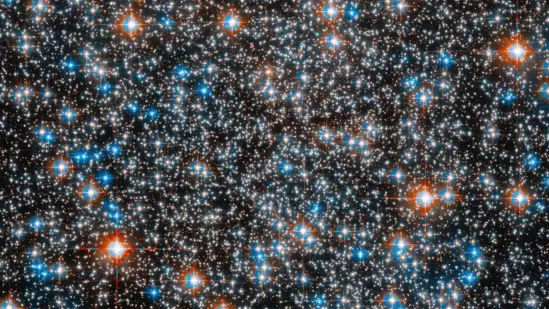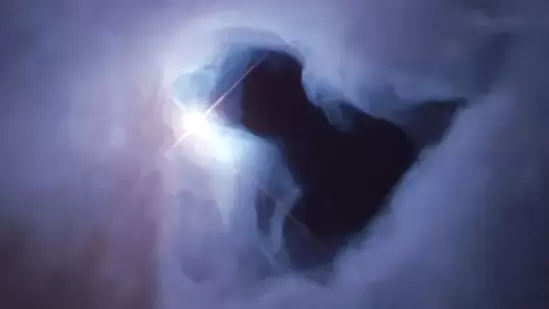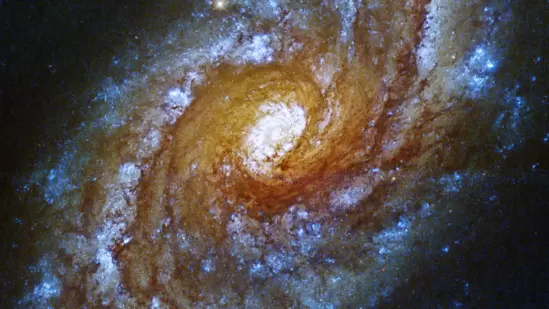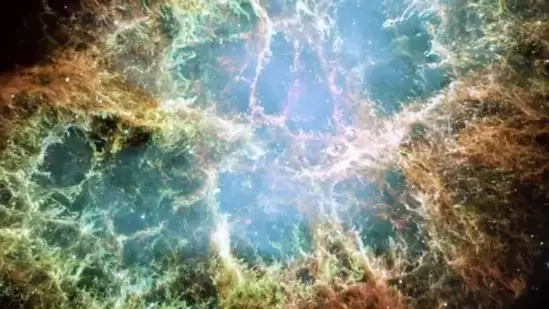10 breathtaking astronomical images captured by NASA's Hubble Space Telescope
Published on Mar 30, 2025 01:53 PM IST
- Take a look at some of the most stunning images captured by NASA's Hubble Space Telescope during its more than 30 years in orbit.
1 / 10

Published on Mar 30, 2025 01:53 PM IST
This image features the spiral galaxy NGC 5643, located about 40 million light-years away in the constellation Lupus, the Wolf (NASA)
2 / 10

Published on Mar 30, 2025 01:53 PM IST
This image features a portion of M55. The cluster looks spherical as a whole because the stars’ gravitational attraction pulls them together. (NASA, ESA, A. Sarajedini (Florida Atlantic University), and M. Libralato (STScI, ESA, JWST))
3 / 10

Published on Mar 30, 2025 01:53 PM IST
This image features MyCn18, a young planetary nebula, the glowing relic of a dying, Sun-like star (NASA, ESA, Raghvendra Sahai and John Trauger (JPL), the WFPC2 science team)
4 / 10

Published on Mar 30, 2025 01:53 PM IST
This picture from the NASA/ESA Hubble Space Telescope features “spirals of dust swirling across trillions of kilometres of interstellar space,” according to NASA. Obtained on February 8, 2004, the image features a “view of an expanding halo of light around a distant star, named V838 Monocerotis (V838 Mon)” (NASA, the Hubble Heritage Team (AURA/STScI) and ESA)
5 / 10

Published on Mar 30, 2025 01:53 PM IST
This image shows the star V380 Orionis shining on the cloud of material left over from its formation, “here seen as the NGC 1999 reflection nebula,” according to NASA (NASA and The Hubble Heritage Team (STScI))
6 / 10

Published on Mar 30, 2025 01:53 PM IST
This image features Hubble's view of the Lagoon Nebula (NASA)
7 / 10

Published on Mar 30, 2025 01:53 PM IST
This image, captured by Hubble’s Wide Field Camera 3, features the galaxy Caldwell 45. NASA says that the bluish color swirling around the centre “indicates the presence of young, hot stars in Caldwell 45’s spiral arms” (NASA, ESA, and J. Lee (California Institute of Technology)
8 / 10

Published on Mar 30, 2025 01:53 PM IST
This image features filaments of gas and dust left behind by an exploded star making up the Crab Nebula. The blue glow in the centre of the supernova remnant is emitted by the remains of the star, a pulsar (NASA, ESA, J. Hester and A. Loll (Arizona State University))
9 / 10

Published on Mar 30, 2025 01:53 PM IST
The image shows ong streamers of stars and gas appearing as as tails in the gravitationally interacting galaxies NGC 4676, nicknamed “The Mice" (NASA, H. Ford (JHU), G. Illingworth (UCSC/LO), M. Clampin (STScI), G. Hartig (STScI), the ACS Science Team and ESA)
10 / 10

Published on Mar 30, 2025 01:53 PM IST





